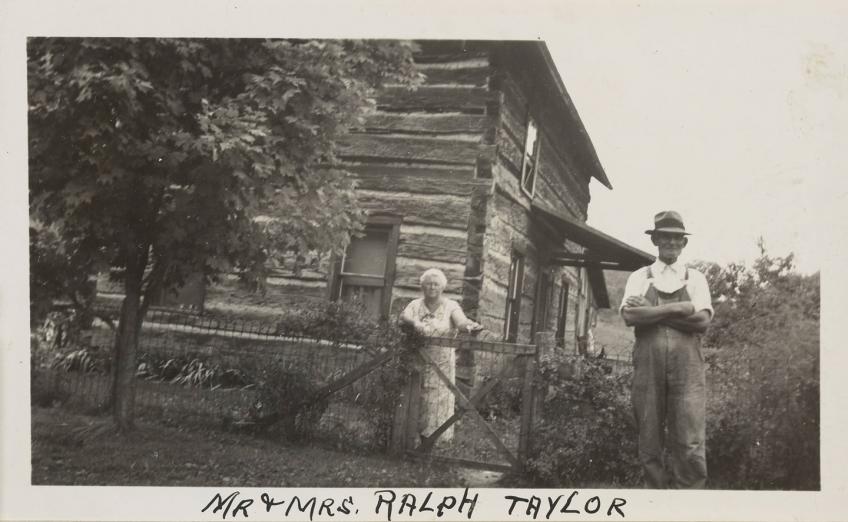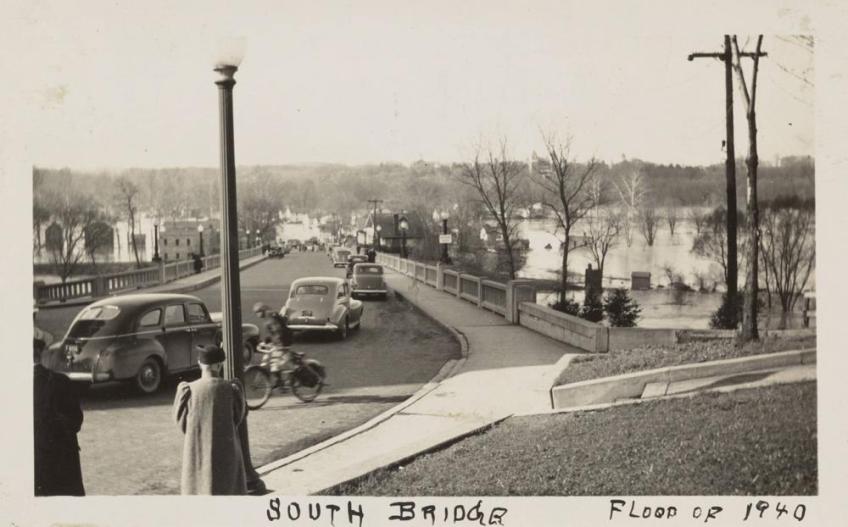
W.E. Peters Historical Athens Scrapbooks Featured in Digital Collection
One of Athens County, Ohio’s most comprehensive documentations of its lands and culture, the Peters Papers’ “Range Books” represent several decades of research and historic evidence compiled by local historian and author, William E. Peters. While his body of work, housed at Ohio University Libraries, has long been a valued resource by successive generations of researchers, the newly published digital collection not only broadens access to these materials, but helps reduce further handling of the physical collection.
About W.E. Peters
Trained as an engineer, William E. Peters (1857–1952) first inhabited the Southeast Ohio region while helping construct railroads during the 1880s. He was then appointed Athens County surveyor, and later worked as an attorney specializing in local property law. His contributions to local historical records include a number of published works and a manuscript collection that is housed in Alden Library’s Mahn Center for Archives and Special Collections. One of the most utilized and valued resources found within the Peters Papers are his Range Books, a 26-volume scrapbook series that documents unique and historic features of Athens County. Over the years, patron requests for information and reproduced images have included those of the National Park Service, while others have used photographic details found in the Range Books to successfully list properties in the National Register of Historic Places.

About the Range Books
Compiled primarily during the 1940s, Peters photographed hundreds of historic sites while traversing the county in his Buick sedan. His advanced cartographic skills are demonstrated throughout the volumes, which feature detailed maps identifying the exact locations of sites he documented. Donning a brimmed hat and sometimes accompanied by his dog, Peters visited every known burial site within the county, amassing more than 1,500 photos of cemeteries alone. He meticulously recorded inscriptions on grave markers, authenticating family histories as he went. But the scope of Peters’ Range Books extends far beyond his genealogical research. He also documented covered bridges, prehistoric mounds, mining sites, schoolhouses, rock formations, and homesteads, among other features.
The volumes describe a bygone era, one that Peters seems to have recognized was vanishing. Perhaps most significant are his efforts to collect oral, or “unwritten” histories as he called them. In addition to photographing property owners and descendants within the landscape, he transcribed their stories, gathering accounts of long-time community members and lore of early settlers. Stories such as that of Fred Kittle, former student of the abandoned Sayre schoolhouse in Ames Township, who 40 years after attending, recalled the names of his teachers and fellow students. Peters used his encounters with residents to verify genealogical details as well as to document their insights concerning the land, its unique features and history.
About the digitization project
The Range Books have their own history of heavy use in the Mahn Center reading room, thereby underscoring the importance of digitization—both to preserve the original artifacts and to facilitate access. Like many digital projects, the online collection originated as a collaboration between Mahn Center curators and the Libraries’ Digital Initiatives unit. In addition to the efforts of these staff members, the image capture itself was largely completed by Digital Initiatives student employees. These students, majoring in Visual Communication in the Scripps College of Communication, are trained to operate the Libraries’ Phase One camera system designed for cultural heritage imaging.
A more recent project, launched in response to the University’s transition to remote work, will further enhance the online collection by updating the Range Books’ full-text transcripts to include handwritten annotations such as photo captions as well as corrections to the typed text. These improvements are crucial to the accuracy of text searches performed by researchers and genealogists, especially those seeking specific human and place names. Student employees and staff throughout Ohio University Libraries have contributed to the effort, using online submission forms to transcribe page contents after which the digital records can be updated. Thanks to the transcription volunteers who gave their time and attention to Peters’ work, the project will help optimize the research potential of this unique collection.
Visit the William E. Peters Papers online to gain access and browse digitized content, including the Range Books. If you have questions about materials from the Peters Papers, please contact Special Collections Librarian, Miriam Intrator.
Written by Erin Wilson, Digital Imaging Specialist & Lab Manager. Edited by Janet Carleton, Digital Initiatives Coordinator.
